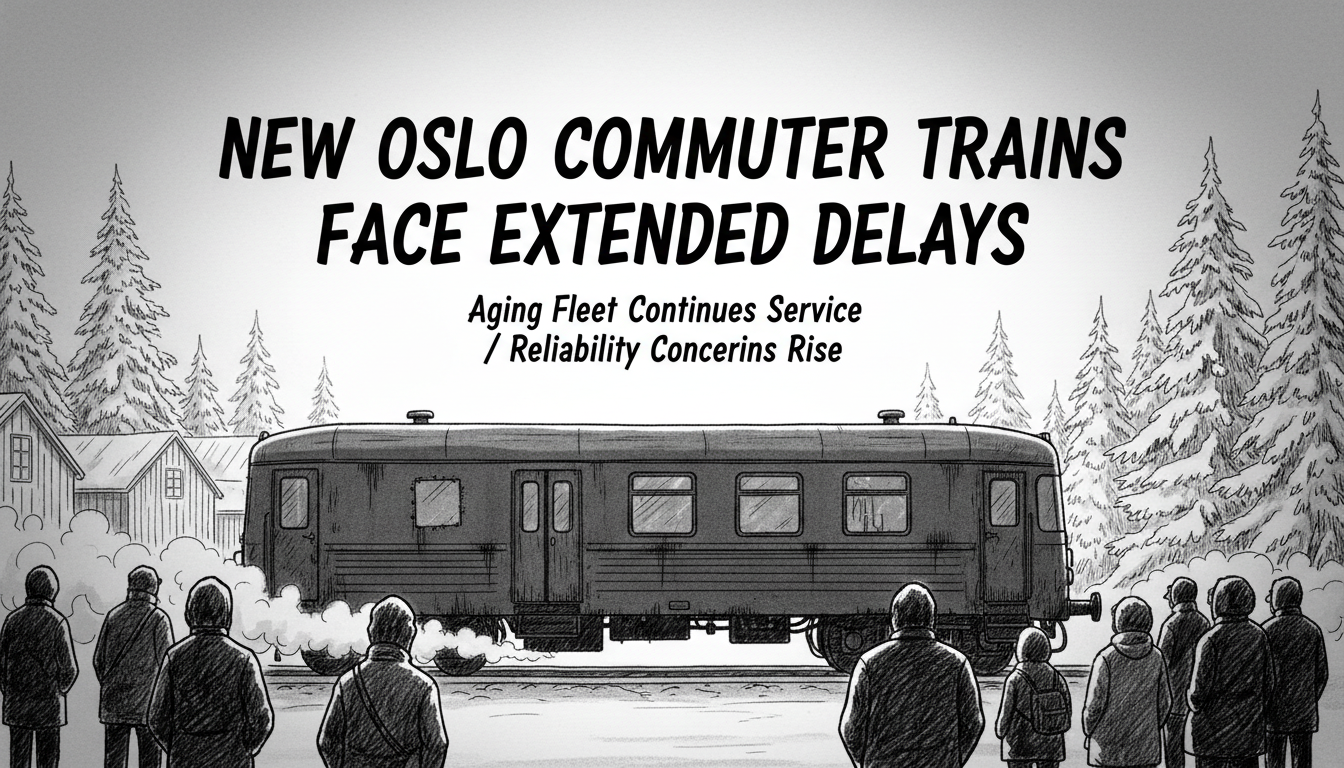Commuters in the Oslo region face continued reliance on aging rail cars as new train deliveries encounter further setbacks. The much-anticipated fleet replacement could now extend for several more years.
Rail authorities received notification about potential delays stretching up to seven months beyond the already revised schedule. This development affects 36 new trains originally scheduled for deployment this year.
The timeline shift means passengers will experience a phased transition rather than a complete fleet overhaul. The first new trains should arrive next June, but full replacement will require additional months.
Oslo's aging commuter trains represent one of Europe's oldest active fleets. Some cars have served passengers for nearly five decades. The extended delays raise questions about maintenance costs and reliability as equipment ages beyond intended service life.
Norwegian transportation infrastructure faces particular challenges with harsh winter conditions and complex geography. The country's mountainous terrain and coastal routes demand specialized rolling stock that requires custom manufacturing.
This delay reflects broader European supply chain issues affecting rail manufacturers. Multiple countries report similar postponements in train deliveries as factories struggle with component shortages and production bottlenecks.
The situation creates practical challenges for daily commuters. Older trains typically feature fewer amenities, reduced accessibility, and higher maintenance requirements. Passengers may encounter more frequent service interruptions as the aging fleet requires increased repairs.
Rail officials must now balance maintenance budgets against unexpected extension of older equipment's service life. The financial implications could affect other planned infrastructure improvements across the Norwegian rail network.
Transportation analysts note that such delays often create ripple effects throughout system planning. Schedule adjustments, staff training, and maintenance facility upgrades all require coordination with new equipment arrivals.
The extended timeline raises questions about whether temporary solutions might be necessary. Rail authorities could consider refurbishing some existing cars or leasing equipment from other networks to bridge the gap.
Commuters express frustration about the continued delays. Many had anticipated modernized features including better seating, improved climate control, and enhanced digital services that the new trains promise to deliver.
This situation highlights the challenges of maintaining critical infrastructure during transition periods. The Oslo region's growing population increases pressure on public transportation systems to provide reliable, modern service.
Rail officials face difficult decisions about prioritizing maintenance resources as they await the delayed deliveries. The extended timeline tests the limits of engineering and operational planning.
Norwegian transportation policy emphasizes environmental sustainability and reducing road traffic. Effective rail service remains crucial to these goals, making equipment reliability a priority for urban planning and environmental targets.
The delay comes amid broader discussions about European rail manufacturing capacity and supply chain resilience. Multiple countries report similar challenges in maintaining and upgrading transportation infrastructure amid global production constraints.

